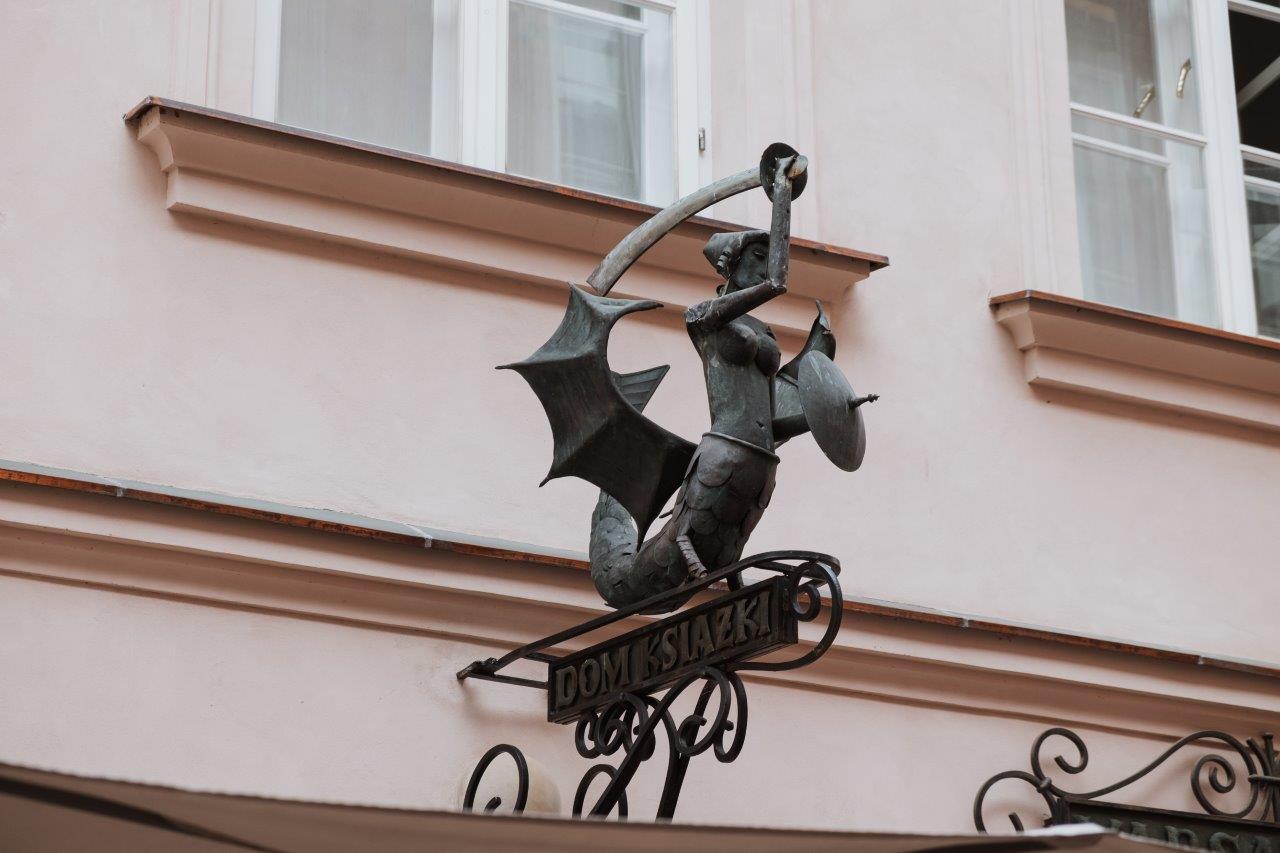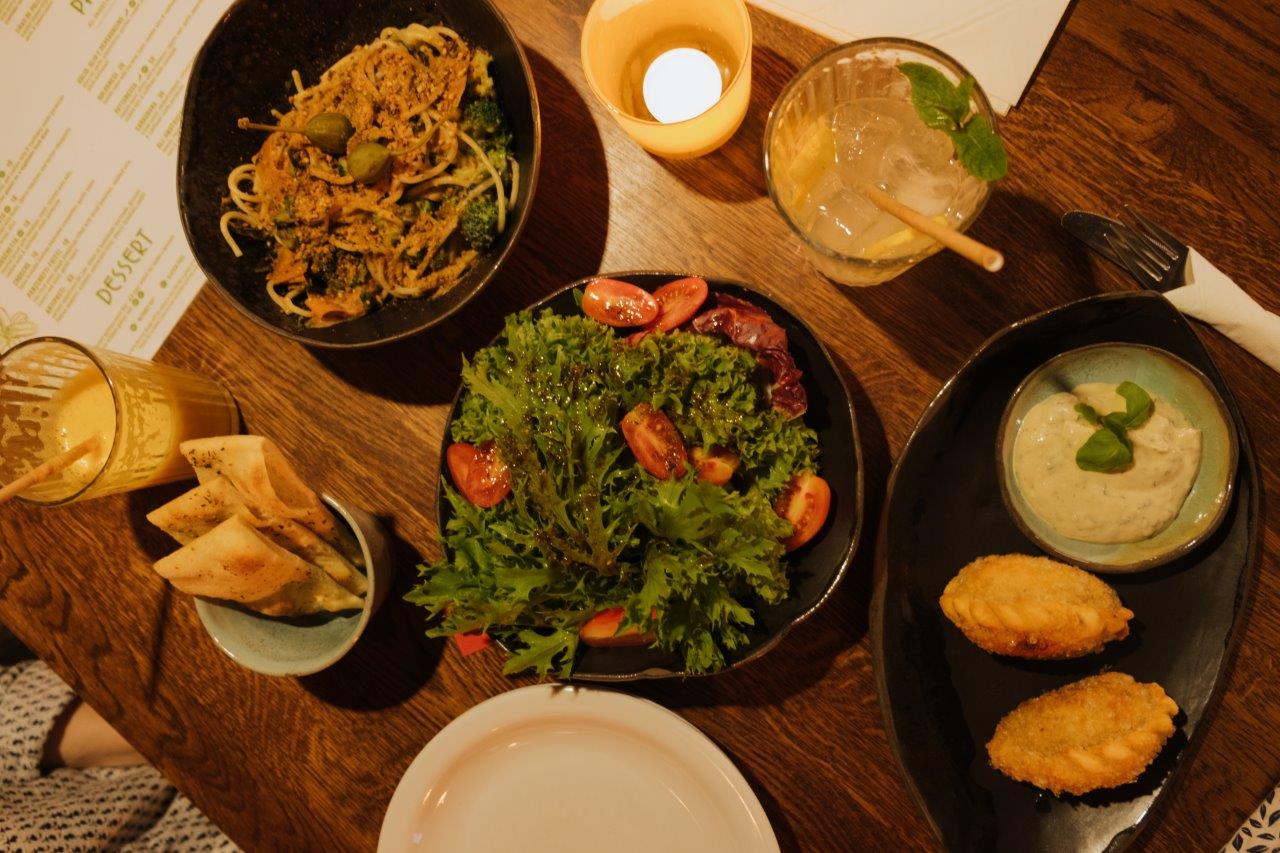
Warsaw is Poland's bustling capital city in the eastern side of the country. We spent 24 hours in Warsaw after our time hiking in Tatra National Park, and loved the atmosphere, history, culture and vegan food scene to be found here (check out my recommendations at the bottom of this post).
During our time in Warsaw, we joined a free walking tour which was a fantastic introduction to the old town, giving us a great historical understanding of the city's past. We learnt hundreds of years worth of knowledge including why the king chose to move the capital here from Kraków in 1596 (to be closer to his in-laws in Sweden and to the meeting point of the Polish-Lithuanian Government) and how Warsaw fared during WWII and the Warsaw Uprisings (not well; 85% of the city was destroyed). I strongly recommend joining this tour to get a really good insight into how much the city has changed over the years.
While in Warsaw, we stayed in an adorable AirBnB in the southern downtown (Śródmieście Południowe) which just so happened to be right in the middle of all the best restaurants in town. According to National Geographic, Warsaw is one of the top eight cities in the whole world for vegan food - how's that for progressiveness and deliciousness!? We made sure to try their recommendation of the vegan pierogi at Vege Miasto and can vouch that they were the best we tried on our whole trip.
VISITING WARSAW
The main train station is in the southern part of the city, a ten-minute tram ride from the Old Town. Southern downtown is home to all the fabulous foodie spots and the Old Town is where you'll find all the key tourist highlights. A large wall of lockers is available at the central train station where you can leave your luggage for the day for just 16 PLN.
The best way to kick off your time in Warsaw is to join a free walking tour, then you can choose what you want to revisit or spend more time at.
As the capital of the city, there's plenty to do here and a considerable amount of pre-war, WWII and post-war communist history to learn and understand. Warsaw has been rebuilt so many times; it's fascinating to witness the changes.
Museum of King Jan III's Palace at Wilanów
One of the few surviving examples of pre-war Warsaw, King Jan III's opulent yellow palace is just south of the city. Much of Warsaw's reputation is that of WWII and the post-war communist era, but to visit this palace is to understand what a rich culture there was before.
Learn more about the history of the palace and see many more photos here!


Palace of Culture and Science
In the centre of the city, right outside the central station, the symbol of communism in Warsaw dominates the skyline. It was commissioned by Stalin as a gift from the Soviet people, but ironically was inspired by the Empire State Building, a symbol of capitalism. The building incorporates architectural elements from all across Poland and was, as the party's headquarters, designed to emulate communism as 'the people's castle,' even inviting the best workers in the city to the annual New Year's Eve Balls.
Stalin did not live to see the building completed, which has over 3300 rooms. It was Warsaw's tallest building until 2021 and today, aside from being one of the most controversial buildings in Poland, is home to a panoramic viewing deck on the 30th floor.

Sigismund's Column in Castle Square
One of the tallest monuments at the time it was built, this was a controversial column as it depicted a king instead of the typical religious persons. In order to be allowed to keep it, the cross was later added symbolically above the king so as to still show that God is superior. It was destroyed during the Warsaw Uprising of 1944; the destroyed column remnants are on display in front of the Royal Castle and a reconstruction now stands in Castle Square.

Old Town Market Square
You may be surprised at how small Warsaw's Old Town Square is, but it's important to remember it was built for the few thousand inhabitants of 15th century Warsaw, not the nearly 2 million residents that call this place home today. One of the prettiest town squares I've seen, beautiful buildings line the square. Once home to the folk of the day, nowadays they're bustling restaurants and hotels popular with visitors to the city.
With 85% of the city destroyed in WWII and the Warsaw Uprisings, the buildings in the square today are actually post-war reconstructions, carefully redone to emulate the city's historical design. This truly is a city rebuilt from the rubble.
In the heart of the square is Warsaw's loveliest and most famous monument (and one of particular significance to our family!), Syrenka, the mermaid of Warsaw. She features on many buildings, walls, souvenirs, printed information, coat of arms and every transport station in the city as the official symbol of Warsaw. Legend goes that she swims in the Vistula River alongside Warsaw to protect the city with her sword and shield.



The Mermaid of Warsaw, Syrenka

Another mermaid statue outside a Polish bookstore
Marie Curie Museum
Maria Skłodowska, later known as Marie Curie, was born in Warsaw. She is most famous for her work on the discovery of polonium and radium, for which she won Nobel Prizes in both physics and chemistry.
Today, the 18th century house in which she was born is a museum dedicated to her life and work, located at 16 Freta Street.

Barbican
The medieval defensive walls of the city that once wrapped all the way around Warsaw were built in the mid-1500s and featured most notably the Barbican as the northern entrance to the city. It was used just once for military reasons when, after the Swedes occupied in the city in 1656 while the King and his government were on official business in Kraków, the Poles attacked their own city to take back control, which took over a year!
Destroyed in WWII, you can today see a grey line that separates the old wall from the reconstructed wall above. Today, the Barbican divides Warsaw's Old Town from New Town.



Looking from the outside in

You can see the grey line dividing the original wall from the reconstruction
Streets of Old Town
A beautiful city, this is an exceptional example of rebuilding from the rubble. In fact, the historic centre of Warsaw is a UNESCO World Heritage Site, and the only site on the list (of over 1000 places) that is a reconstruction of the original. Wandering the old streets you can hardly tell that all of this was reduced to nearly nothing.

Street just inside the Barbican and castle walls

The photo shows what this street looked like 2 years post-war; a stark difference compared to today
VEGAN FOOD IN WARSAW
As mentioned at the top of this post, according to National Geographic, Warsaw is one of the top eight cities in the whole world for vegan food, alongside other fantastic global cities. Who would have thought? They say in the article that "in Warsaw, veganism goes hand in hand with political activism, and wholefood co-ops and cafes are a great way into Poland’s counterculture."
While we could have spent weeks here just trying out all the restaurants (from vegan sushi to Mexican to burgers), here are the two spots we tried and loved:

LEONARDO VERDE
This delightful Italian place is 100% plant-based and absolutely nailed the menu. Every single thing we ordered was mouth-wateringly delicious: we tried the Panzerotti Fritti, dough dumplings filled with dried tomatoes, smoked tofu, capers, garlic and basil, as well as the Con Spinaci E Salmone with a creamy sauce, smoked carrot, spinach, cashew and vegan parmesan. Absolutely dreamy.
Address: Poznańska 13 | website

VEGE MIASTO
This is the one that National Geographic recommends and I can tell you for a fact that the vegan pierogi here are the best we tried in the whole country. There's five delightful flavours to indulge in. We also had their lentil soup and their spicy noodle soup - I could eat them every day.
Address: aleja "Solidarności" 60A | website
CHECK OUT MY VLOG OF WARSAW HERE!
PIN THIS POST TO REFER BACK TO LATER!


Hi! I’m Jana, a Dutch-German-British-Canadian with a dream of seeing every country in the world. I am a storyteller, photographer and adventurer passionate about documenting and sharing my travels.
